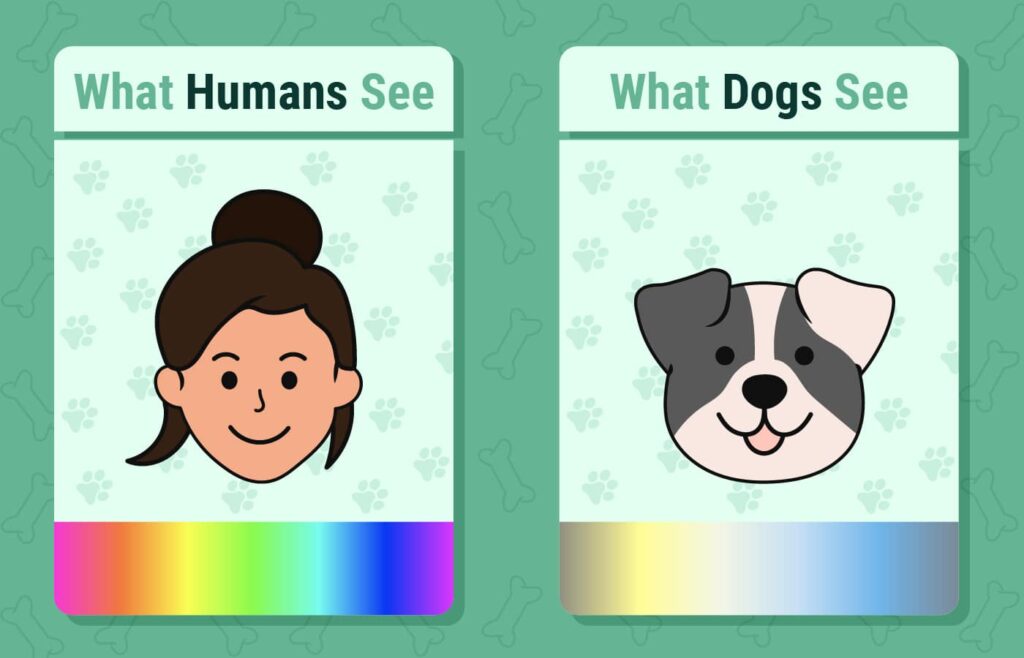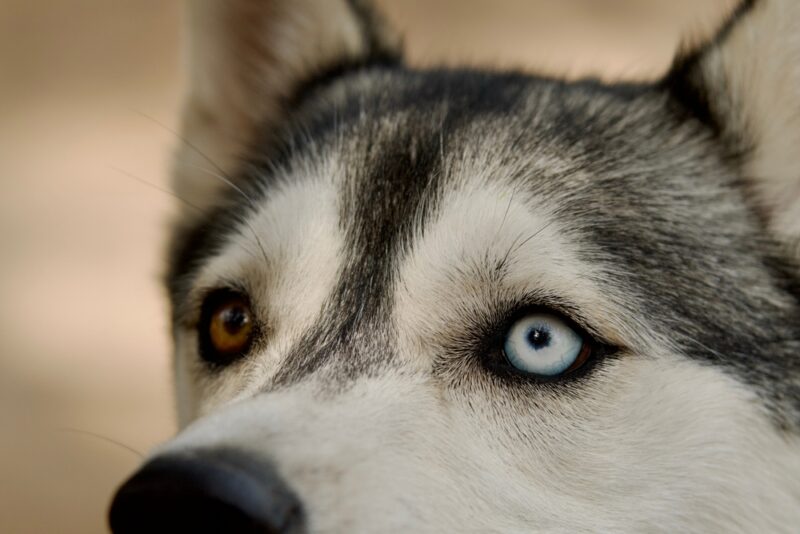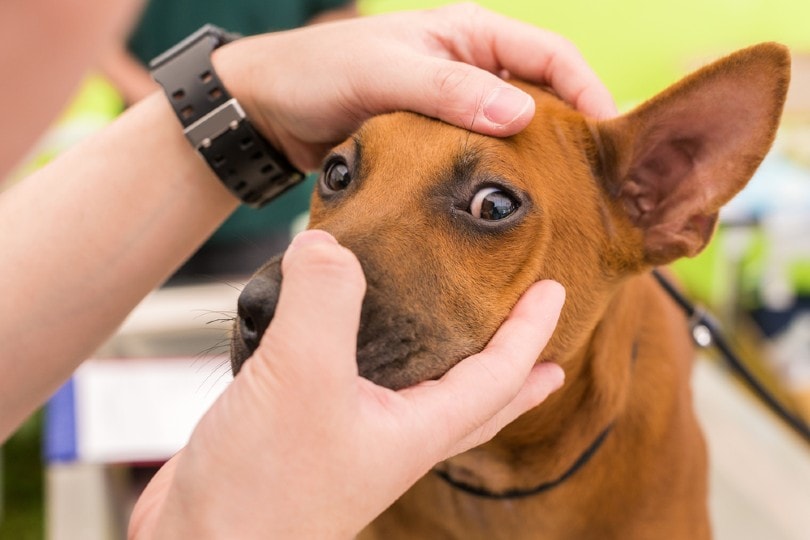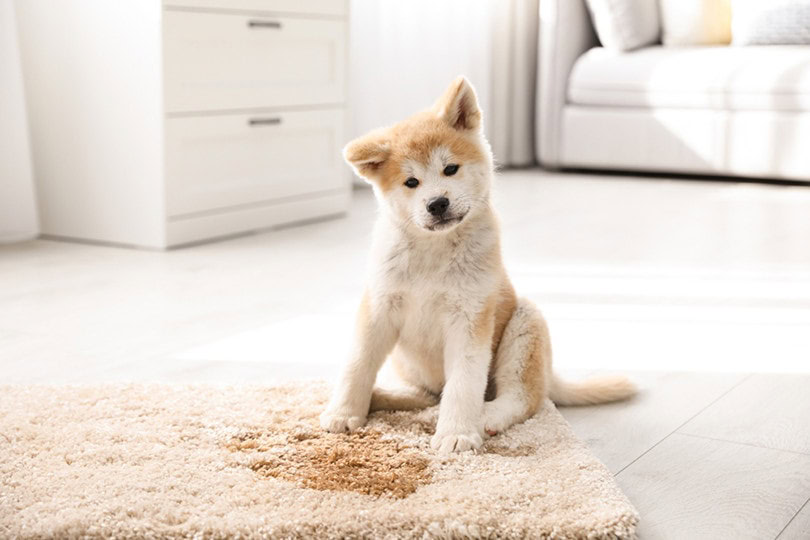VET APPROVED

The information is current and up-to-date in accordance with the latest veterinarian research.
Learn more »Click to Skip Ahead
You may have heard that dogs are color-blind, but what exactly does that mean? Dogs aren’t color blind in the sense that they don’t see color at all; instead, they have a more limited range of color vision than humans. The colors they see also don’t appear as vibrant as we see them. Dogs have dichromatic vision, meaning that they see the world in shades of blue/purple and yellow. Dogs can’t really distinguish reds, oranges, or greens. These colors appear somewhere between yellow, gray, and blue for them.

How Color Vision Works in Dogs

To understand how dogs see color, you first need to understand how the eye works. The retina, at the back of the eyeball, contains specialized cells called photoreceptors. There are two types: rods and cones. Rods work in very low light conditions and detect motion, while cones differentiate color and need higher amounts of light to work.
People’s eyes have three types of cone photoreceptors, and dogs have two types. Each cone type has different wavelength sensitivity and is therefore responsible for a different color perception: red, blue, and green. Cone cells in a dog’s eye are limited to detecting yellow and blue colors.
This “two-colored” vision is called dichromatic vision.

How Color-Blindness Works
Color blindness describes the inability to differentiate between colors or see color. Abnormalities in cone receptors are the cause of this condition.
There are multiple types of color blindness in people: red-green color blindness, blue-yellow color blindness, and (the most rare) complete color blindness. Which type a person has depends on which cone receptors are affected. A person with red-green color blindness cannot differentiate between red and green, and both colors will look the same to them.
Since dogs have yellow-blue dichromatic vision, they see colors in a similar fashion as people who are red-green color blind. They are skilled at distinguishing between shades of blue and yellow but not red and green.

Dogs See Differently
Both dogs and humans have the two types of photoreceptors, rods and cones, in their retinas. The human eye has different numbers and distribution of rods and cones than the canine eye. Dogs have a much higher proportion of rods than humans; therefore, their color vision is not as important as their night vision and their ability to detect movement.
These physiological differences result in dogs having superior night vision and motion-tracking abilities, and humans see more colors and finer details than dogs.
What Colors Can Dogs See?
Dogs see the world through a unique color spectrum, with yellow and blue as the main colors. Blue can be distinguished quite well, while reds, yellows, and greens look more or less the same.

What Color Means to Your Dog
Remember that bright red dog toy that you picked out? Or the orange ball your dog can’t ever find in the grass? Or how your dog doesn’t seem to like their lime-green bed? Their indifference is likely related to their limited color vision.
While bright, rainbow-colored dog toys, beds, and collars appeal to us, color isn’t likely to impact your dog’s preferences. So many dog toys are bright orange and red because the color appeals to humans. Since humans are the ones buying the toy, this is how dog items are marketed. Your dog sees that bright-red toy as a blob of brown.
You can use your newfound knowledge of your dog’s color vision to your advantage. Choosing balls or Frisbees that are blue or yellow could help your dog spot them faster in the outdoors. For agility sports, choose equipment in blue and yellow. It helps your dog see better, improve their ability to judge distances, and quickly adjust the course.

Final Thoughts: Are Dogs Color Blind?
While your dog can’t see the same color spectrum as you, they have far superior low-light vision, are better at detecting motion, and have a broader visual field. A dog’s vision is perfectly suited to their needs, and any deficits are easily compensated for by their other incredibly well-developed senses. A dog’s senses of smell and hearing far exceed those of a human. This is why our dogs can “see” things we can’t. Now that you know what colors your dog does see, you can use this to your advantage by selecting toys in colors that they will recognize.
See Also:
Featured Image Credit: Alexas_fotos, Pixabay











